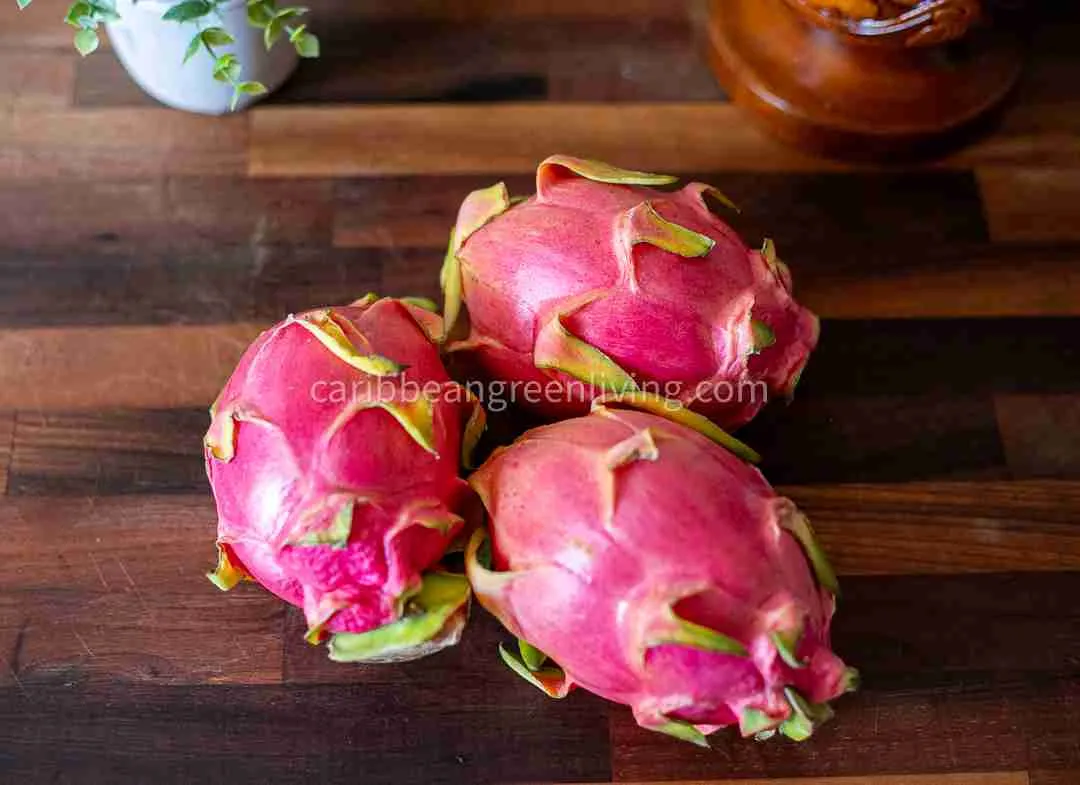Dragon Fruit: Health Benefits, How to Eat, and Zero-Waste Uses
Did you know that Dragon Fruit is a superfood with zero-waste uses?
Vibrant, nutrient-packed, and refreshingly sweet, dragon fruit (also called pitaya) is one of the most striking tropical fruits you can find. With its bright pink or yellow skin, speckled flesh, and mild, refreshing taste, this fruit is more than just eye-catching—it’s loaded with health benefits and endless culinary possibilities.
Let’s explore everything you need to know about dragon fruit, from its health perks to its zero-waste potential in cooking.

Health Benefits of Dragon Fruit
Dragon fruit is more than just a pretty fruit—it’s packed with antioxidants, fiber, and vitamin C. Here’s why you should add it to your diet:
- Boosts Immunity: High in vitamin C, it helps strengthen your immune system.
- Supports Digestion: Loaded with fiber, it promotes gut health and regular digestion.
- Rich in Antioxidants: Contains flavonoids, betacyanins, and polyphenols that help fight free radicals.
- Good for Heart Health: The seeds contain heart-healthy omega-3 and omega-6 fatty acids.
- Hydrating and Low in Calories: Perfect for hydration, especially in tropical climates.
Season and Where Dragon Fruit Grows
Dragon fruit thrives in tropical and subtropical regions, growing on cactus-like vines. It’s widely cultivated in:
- The Caribbean (Dominican Republic, Haiti, and Puerto Rico) (check out https://www.growninhaiti.com/ for more fruits grown in Haiti)
- Central & South America (Mexico, Colombia, Ecuador)
- Southeast Asia (Vietnam, Thailand, the Philippines)
- Florida & Hawaii in the U.S.
It typically fruits between summer and early fall, but in warm climates, it can produce fruit multiple times a year.
Availability: Where to Buy Dragon Fruit
You can find fresh dragon fruit in:
- Caribbean markets and roadside vendors
- Supermarkets (Whole Foods, Trader Joe’s, and other grocery stores)
- Asian and Latin American stores
- Farmers’ markets and specialty produce stores
- Online retailers offering fresh or freeze-dried options
Look for smooth, evenly colored skin without too many blemishes. A little softness means it’s ripe!
How to Wash, Cut, and Peel Dragon Fruit
- Wash the skin thoroughly under running water. I usually spray a little bit of vinegar on the fruit, give it a gentle rub, and rinse it under running water.
- Slice in half lengthwise. Depending on the variety, the flesh inside can be white, pink, or red.
- Scoop out the flesh with a spoon, or peel off the skin and dice the fruit.
- Keep the skin! It has creative zero-waste uses (more on that below).

How to Enjoy Dragon Fruit
Dragon fruit is mildly sweet with a texture similar to kiwi. Here are some easy ways to eat it:
- Raw: Eat it as is or mix it into fruit salads.
- Smoothies & Juices: Blend it with mango, banana, and coconut water.
- Toppings: Add to yogurt, oatmeal, or ice cream.
- Salsas & Chutneys: Pair the fruit with pineapple, lime, and chili for a refreshing salsa.
- Baking: Use in muffins, cakes, and sorbets.
How to Buy the Best Dragon Fruit
- For immediate eating: Choose fruit that gives slightly when pressed.
- For later use: Pick firmer fruit and let it ripen at room temperature.
- Check the color: Bright skin with few blemishes indicates freshness.
How to Store Dragon Fruit
- Whole fruit: Store at room temperature for 3-4 days or in the fridge for up to two weeks.
- Cut fruit: Keep in an airtight container in the refrigerator for 1-2 days.
- Freezing: Scoop out the flesh, dice, and freeze in a sealed bag for smoothies or sorbets.
Zero-Waste Cooking: How to Use Every Part of Dragon Fruit
Dragon fruit is a zero-waste powerhouse! Every part of it—the flesh, skin, and even the seeds—can be used in creative ways. While the outer skin may have a slightly bitter taste, you can gently peel it with a paring knife and use the inner, reddish layer or the flesh for various recipes.
1. Cooking with the Skin
- Stir-fry thin slices of dragon fruit skin with garlic and soy sauce and top with green onions.
- Blend into soups or teas for added nutrients.
- Pickle it with vinegar, salt, and spices for a tangy snack.
2. Incorporating into Smoothies
- Use frozen dragon fruit pieces to add color and nutrients.
- Blend the skin with other fruits—it’s rich in antioxidants!
3. Natural Food Coloring
- The red-skinned variety makes an excellent natural dye for cakes, frostings, and drinks.
- Use the juice for pink lemonade or to tint pasta and dough.


Examples of Simple Ways to Use Dragon Fruit
- Breakfast: Dragon fruit and coconut chia pudding.
- Snack: Dragon fruit sorbet or smoothie bowl.
- Dessert: Pitaya ice cream or dragon fruit popsicles.
- Drinks: Infuse dragon fruit into cocktails or flavored water.
- Savory Dishes: Add diced dragon fruit to summer salads.

Final Thoughts
Dragon fruit isn’t just delicious and healthy—it’s also an eco-friendly, zero-waste fruit that you can use from skin to seed. Whether you’re blending it into smoothies, using it as a natural food dye, or cooking the skin, this tropical superfood deserves a spot in your kitchen!
Have you tried dragon fruit? Let us know your favorite way to enjoy it!






